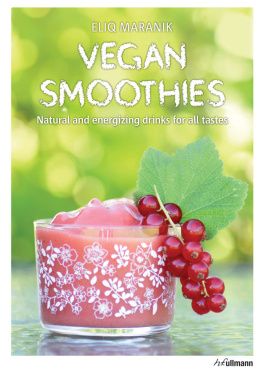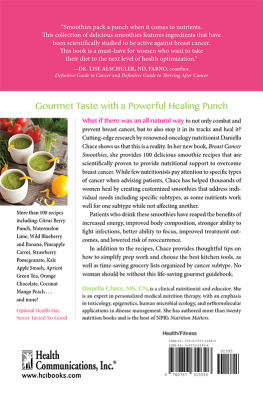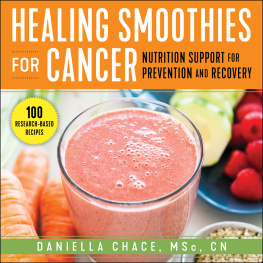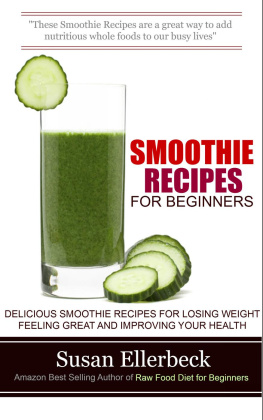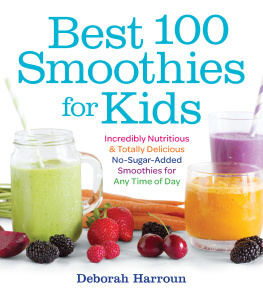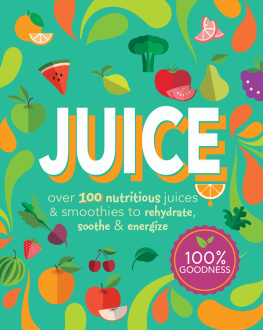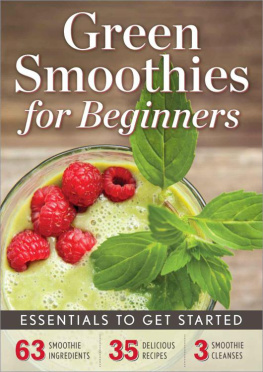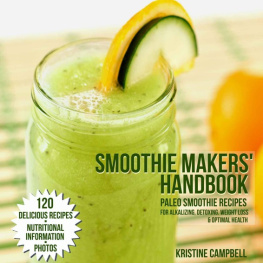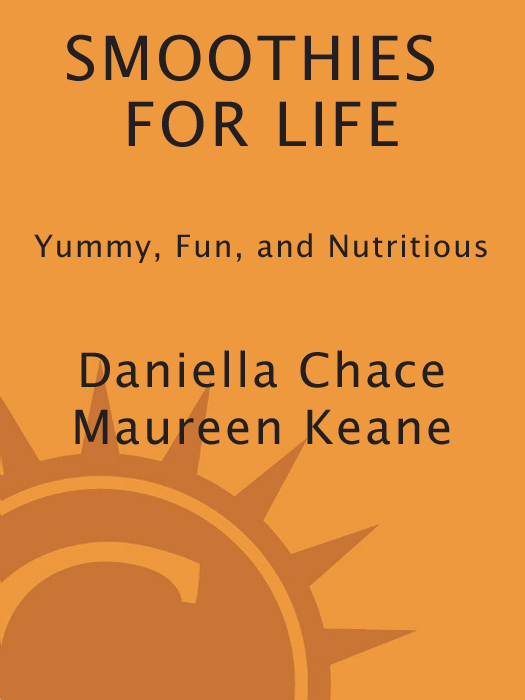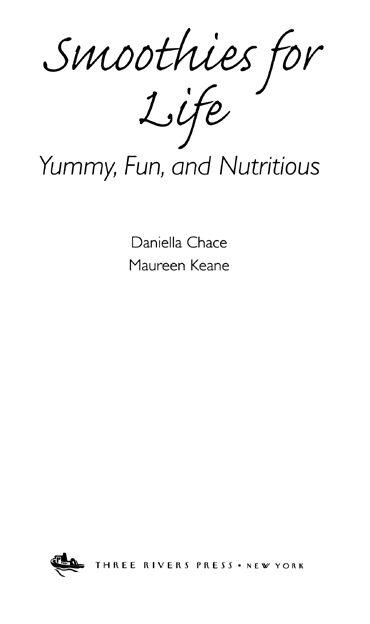Copyright 1998 by Daniella Chace and Maureen Keane
All rights reserved. No part of this book may be reproduced or transmitted in any form or by any means, electronic or mechanical, including photocopying, recording, or by any information storage or retrieval system, without written permission from Random House, Inc., except for the inclusion of brief quotations in a review.
Published by Three Rivers Press, New York, New York.
Member of the Crown Publishing Group, a division of Random House, Inc.
www.crownpublishing.com
THREE RIVERS PRESS and the Tugboat design are registered trademarks of Random House, Inc.
Originally published by Prima Publishing, Roseville, California, in 1998.
A per serving nutritional breakdown is provided for each recipe. Each recipe is treated as one serving. If a range is given for an ingredient amount, the breakdown is based on the smaller number. If a choice of ingredients is given in an ingredient listing, the breakdown is calculated using the first choice. Nutritional content may vary depending on the specific brands or types of ingredients used. Optional ingredients or those for which no specific amount is stated are not included in the breakdown.
This book is not meant to be a substitute for medical counseling or a guide for those on restricted diets. Readers with restricted diets should follow the guidance of their physician. The author and Random House, Inc., shall have neither liability nor responsibility to any person or entity with respect to any loss, damage, or injury caused or alleged to be caused directly or indirectly by the information contained in this book.
Library of Congress Cataloging-in-Publication Data
Chace, Daniella.
Smoothies for life : yummy, fun, nutritious / Daniella Chace and Maureen Keane.
p. cm.
1. Fruit drinks. 2. Smoothies (Beverages). I. Keane, Maureen. II. Title
TX815.C45 1998
641.875dc21 98-2552
eISBN: 978-0-307-80707-6
v3.1
Contents
CHAPTER
Making
Smoothies
S moothies are thick drinks made in the blender or food processor from whole or frozen foods and liquids such as milk or juice. They are unusually popular at the moment, because they are delicious and can be consumed on-the-go. Breakfast smoothies can be drunk on the drive to work. Lunch smoothies can be drunk at the desk easily. On the weekend, they offer a quick meal replacement as you run to childrens soccer games, for example. They are versatile, they do not require the purchase of expensive equipment, and they are quick and easy to make.
SMOOTHIE EQUIPMENT
You probably have all the equipment you need now to make great smoothies: a blender or a food processor. If you have both, you may want to experiment to see which gives you the best results. If you are going to buy a new blender, invest in the most powerful motor you can find. The size of the motor will determine how well and how long the appliance will work. Look for a strong, easy-to-clean base. Do you really need all those speed buttons? Prying dried fruit out of all those sharp corners quickly gets tedious. Maureens favorite blender has only two speeds, and she has never really needed more than that.
Some blenders come with glass containers, which are easier to clean and look better longer. Plastic is much lighter in weight for those with strength problems, but they are more easily scratched and stained. Which one you buy is of a personal preference.
HOW TO MAKE SMOOTHIES
It is very hard to go wrong when making a smoothie. Usually, you can let your taste buds make the choice of ingredients. We will offer a few suggestions to get you started. Drink smoothies within ten minutes of making them because the water-soluble nutrients will begin to oxidize and the enzymes of fresh fruit will begin to brown the produce after about ten minutes. Also, the ingredients may begin to separate, making the smoothie less than appealing.
Smoothies made during the winter will require less frozen components for thickness than will smoothies made in the heat of summer. Simply add a little water, juice, or milk to smoothies that are too thick. Add ice cubes or frozen fruit to smoothies that are too thin.
SMOOTHIES FOR CHILDREN
Smoothies are a great way to get your child to eat healthy foods. For example, healthy soy foods that your child would never eat on their own become favorite foods when mixed into a smoothie. Just a word of caution: Never add herbs or food supplements to smoothies for children without checking with your pediatrician for dosages. What can be life saving for an adult can be life threatening to a child.

Children under the age of two years should never eat honey even if it is pasteurized. Honey can transmit heat-resistant botulism spores that can be very dangerous to children. Honey also can adversely affect blood sugar levels. Protein powders are not substitutes for baby formula and should never be given to infants.

THE NEVER-ENDING SMOOTHIE
This chapter will help you design your own smoothie recipes based on your individual tastes, needs, and wants. To make the perfect smoothie, start with a 1/2 cup to 1 cup of a liquid base. Add 1 cup of fruit, flavoring to taste, supplements as needed, and then blend until smooth. Pour the finished smoothie into a tall glass and then sit back and enjoy. Thats all there is to it! Dont be afraid to experiment. Almost any soft fruit or vegetable juice tastes great when added to a smoothie. Each recipe makes a single serving from 8 to 16 ounces.
LIQUID BASE
Use 1/2 to 1 cup
The milk of your choice adds a creamy note, yogurt adds a tang, and tofu adds thickness. Coconut milk adds a tropical flavor to any smoothie, but it is very high in fat. Regular coconut milk contains about ten grams of fat per each two-tablespoon serving! Much of that fat is saturated. Lowfat coconut milk is now available in most grocery stores and specialty markets. It contains about two grams of fat per each two-tablespoon serving.
Whole dairy milk is rich in saturated fat, the kind of fat that will promote heart disease, therefore you should use only 1 percent or fat-free milk and yogurt. Soy milk, on the other hand, is made with polyunsaturated fats that prevent heart disease, so whole soy milk and yogurt are preferable.
Goats milk is available in the dairy case of many grocery stores and health food stores. As an alternative to cows milk, it may be helpful to those with dairy allergies, however, it does contain lactose, the milk sugar many people cannot digest, and milk fat, which is associated with heart disease.
Nut and seed milk can be used as the liquid portion of the recipe. You can buy nut and seed milks at health food stores or make your own. Youll find a recipe at the end of this chapter, where youll also find recipes for oat milk and rice milk.


